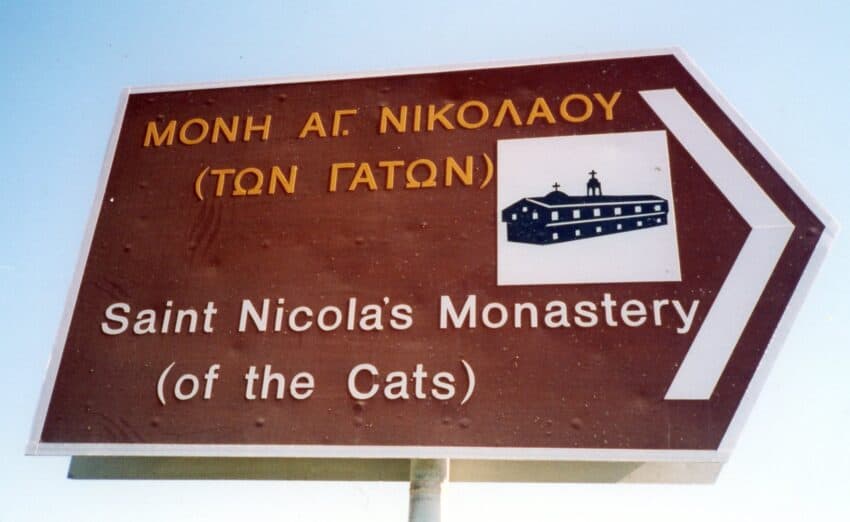THE CAT MONASTERY

To err is human. However, full forgiveness might only be possible from a pet. While in Cyprus, an island nation in the eastern Mediterranean Sea, a buried sense of pet guilt overcame me. I’m not unfamiliar with surging tangential thoughts, but it seemed odd that Chelsea, my childhood cat, leapt into my mind.
Our globe teems with cats that survey everything and supposedly lick themselves clean (I argue this popular theory. If you pay attention, you’ll notice they tend to lick and re-lick the same spot, usually riffling on a specific patch a few inches below one armpit). Some cat people regard their cats above their offspring. They know that mistreating a kitty even once can invite a feline karma imbalance that will spy on them for life. Granted, one or two of us at age four may have swung a cat by the tail helicopter-style, but putting one in the clothes dryer to see if they make the same sound as tumbling sneakers is unspeakable. Luckily, I’m in a country that forgives foolish youth.
Confession. I am not hardwired to vex cats. But, early in my second decade, armed with an idea and little else, I mildly electrocuted Chelsea. Most of us discover at some point that a brisk shuffle across a carpet amps us with a static electrical charge sufficient to create sparks when we touch metal or another human. It also works on cat noses, prompting a shock-sneeze-hiccup. You can get cats to fall for this once or twice, but they won’t fall for it ever again unless your lightning-rod finger is tuna scented. Chelsea, my athletic Russian Blue, have mercy.
Cyprus has a way of reminding us that we’re all somehow connected to animals. It has remnants dating to 5000BC left behind by a dizzying succession of conquering empires. It’s been invaded more than any other country in Europe—and possibly by even more cats. And there is, not surprisingly, a Cat Monastery. The monastery was founded in 327AD when the island was blighted by snakes that overran after a 17-year drought. The cats were first gathered to eliminate the snakes, and throughout the centuries, their descendants moved into this holy cat orphanage.
Roaming through the Cat Monastery, I was stopped in my tracks when one of the cats stared me down and maintained a pensive gaze that lasted minutes. She may have sensed my part in Chelsea’s shock sneezes. You can run, but you can’t hide. I turned to one of the passing nuns and inquired about kitty’s pensive nature. “Does that cat always look like that?” I asked. I think she read my question as one about the cat’s appearance, not the way it was squinting at me, and answered, “Yes.” Then, because I’d asked such a harebrained question, the nun appraised me sympathetically and moved on.
I continued pondering the staredown until another nun passed. I asked her about the feline who seemed to have my number. “Dogs may believe they’re human, but cats know they’re sacred,” was all she said.
– – – – –
“Catnip can affect lions and tigers, as well as cats.” —Romanian donkey-cart pilot, suggesting “we’re all in this together.”
“Every life should have nine cats.” —Cat fan, Lesotho, Africa
{a moment from The Directions to Happiness: A 135-Country Quest for Life Lessons}




